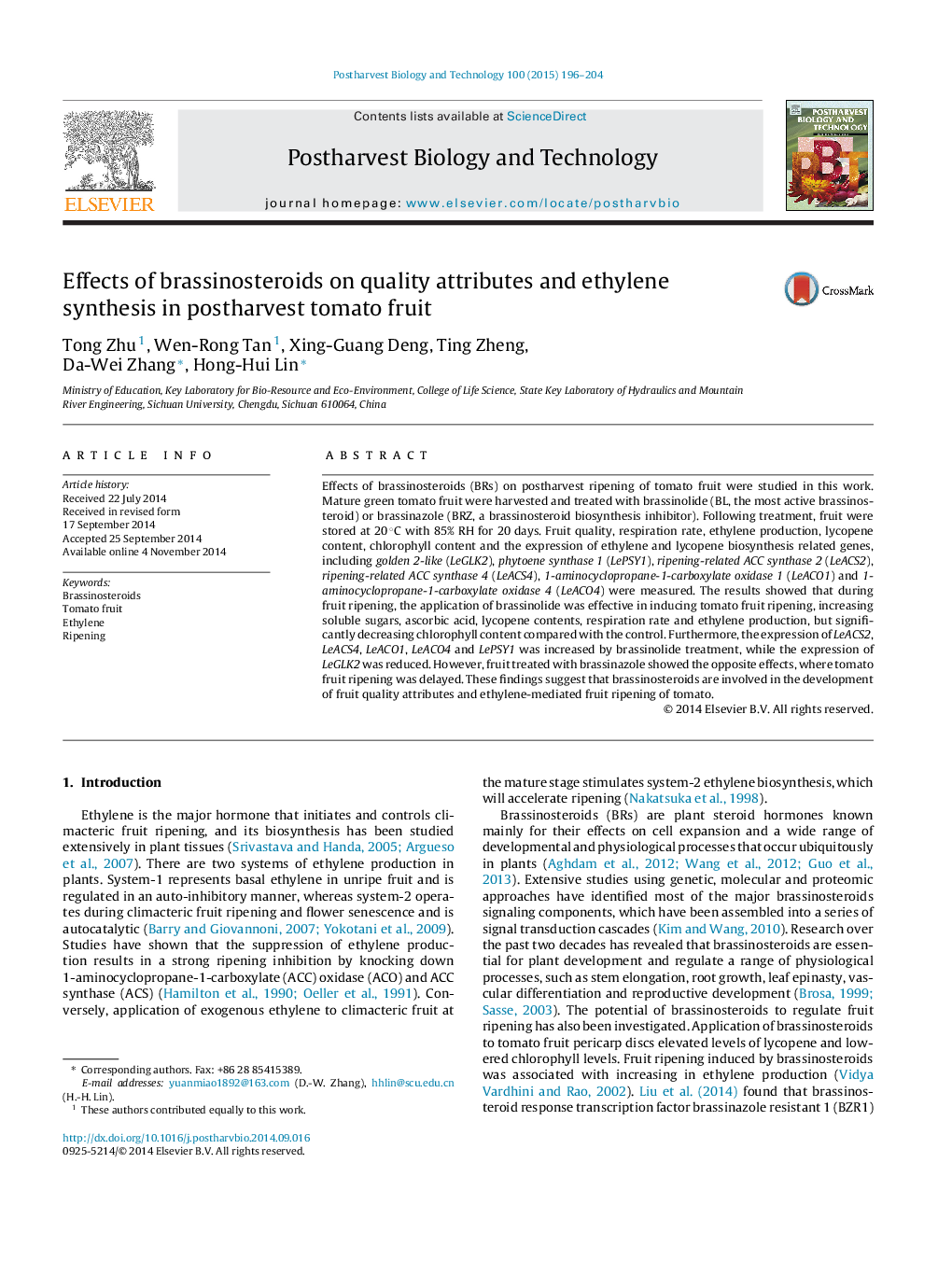| Article ID | Journal | Published Year | Pages | File Type |
|---|---|---|---|---|
| 4518078 | Postharvest Biology and Technology | 2015 | 9 Pages |
•Exogenous brassinolide treatment accelerated tomato fruit ripening while brassinazole treatment delayed this process.•Brassinosteroids influenced the postharvest quality of tomato fruit.•The respiratory climacteric peak arrived earlier with brassinazole treatment during ripening.•Brassinosteroids influenced total chlorophyll and lycopene contents.•Ethylene production was significantly increased by brassinazole treatment.
Effects of brassinosteroids (BRs) on postharvest ripening of tomato fruit were studied in this work. Mature green tomato fruit were harvested and treated with brassinolide (BL, the most active brassinosteroid) or brassinazole (BRZ, a brassinosteroid biosynthesis inhibitor). Following treatment, fruit were stored at 20 °C with 85% RH for 20 days. Fruit quality, respiration rate, ethylene production, lycopene content, chlorophyll content and the expression of ethylene and lycopene biosynthesis related genes, including golden 2-like (LeGLK2), phytoene synthase 1 (LePSY1), ripening-related ACC synthase 2 (LeACS2), ripening-related ACC synthase 4 (LeACS4), 1-aminocyclopropane-1-carboxylate oxidase 1 (LeACO1) and 1-aminocyclopropane-1-carboxylate oxidase 4 (LeACO4) were measured. The results showed that during fruit ripening, the application of brassinolide was effective in inducing tomato fruit ripening, increasing soluble sugars, ascorbic acid, lycopene contents, respiration rate and ethylene production, but significantly decreasing chlorophyll content compared with the control. Furthermore, the expression of LeACS2, LeACS4, LeACO1, LeACO4 and LePSY1 was increased by brassinolide treatment, while the expression of LeGLK2 was reduced. However, fruit treated with brassinazole showed the opposite effects, where tomato fruit ripening was delayed. These findings suggest that brassinosteroids are involved in the development of fruit quality attributes and ethylene-mediated fruit ripening of tomato.
